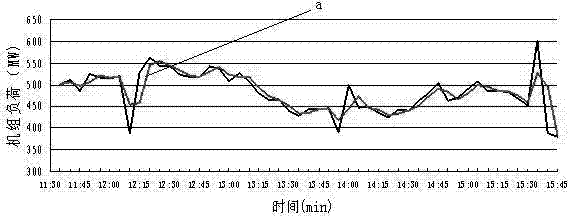Thermal power generating unit load (quasi) steady-state working condition clustering algorithm based on data smoothness functions
A unit load and data smoothing technology, applied in electrical digital data processing, special data processing applications, calculations, etc., can solve problems such as failure to reflect the operating state and performance of unit equipment, identification and modeling errors, result fluctuations and deviations, etc.
- Summary
- Abstract
- Description
- Claims
- Application Information
AI Technical Summary
Problems solved by technology
Method used
Image
Examples
Embodiment Construction
[0076] The present invention will be described in further detail below in conjunction with specific examples.
[0077] The (quasi) steady state in the name in this paper refers to the two situations of steady state or quasi steady state.
[0078] The steps to apply the unit load (quasi) steady-state algorithm based on the data smoothness function to the thermal power plant energy consumption big data platform are as follows:
[0079] (1) Unit load data preprocessing
[0080] Data preprocessing is the first step to obtain the data set of typical operating conditions of the unit load. The collected data is corrected by comprehensively applying statistical methods to eliminate gross errors and bad value points, and improve the accuracy and consistency of the researched data objects. , so that it can truly reflect the operating conditions of the unit.
[0081] Taking the load data of 2n+1 units in the historical database of the system platform as the research object, the samplin...
PUM
 Login to View More
Login to View More Abstract
Description
Claims
Application Information
 Login to View More
Login to View More - R&D
- Intellectual Property
- Life Sciences
- Materials
- Tech Scout
- Unparalleled Data Quality
- Higher Quality Content
- 60% Fewer Hallucinations
Browse by: Latest US Patents, China's latest patents, Technical Efficacy Thesaurus, Application Domain, Technology Topic, Popular Technical Reports.
© 2025 PatSnap. All rights reserved.Legal|Privacy policy|Modern Slavery Act Transparency Statement|Sitemap|About US| Contact US: help@patsnap.com



